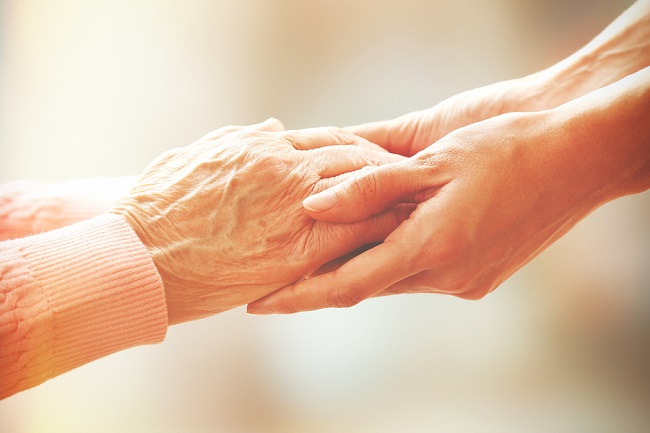
What is Independent Living
Independent Living for a Happier and Productive Lifestyle
To advocates and supporters, independent living is both a philosophy and a movement. It is a mindset with regard to perceiving society and disability. As a campaign, it is a fight for equal opportunities, self-determination, and self-respect.
As a concept, it yielded practical measures to live up to the fight. One of these is the foundation of independent living centers for the disabled and the elderly. These services are ideal for individuals to live autonomously with minimal assistance. For seniors, this set-up offers flexible options to maximize their retirement years. Meanwhile, this may be a great option for individuals with developmental disabilities who need minimal care in the comfort of their own homes. Most centers offer a variety of services that range from housekeeping to financial management, with every program specifically tailored for the individual’s particular need.
In addition, it may be beneficial for those that primarily require minor assistance. These programs are crafted and accomplished with the philosophy’s main objective in mind. As such, services are provided without compromising an individual’s initiative and desire to take control over their lives. This leads to a healthy disposition, a happier outlook, and a productive lifestyle.
A kind of independent living arrangement is “supportive living.” It is an alternative service scheme to nursing home care. It takes into consideration an individual’s income by being one of the most affordable living set-ups, utilizing Medicaid to finance labor and amenities. It usually combines apartment-style housing with minimal personal care and various other services. In this living arrangement, individuals are not mandated to avail all the services and medication. Each service is adjustable and customized depending on the client’s current requirements and liking.
With supportive living, seniors and individuals with disabilities can perform decision-making, as well as enjoy the liberties of personal choice, dignity, privacy, and individuality. A significant increase on the quality of life can be observed.
Service First of Northern California offers supportive living services. These services comprise of: financial management and budgeting, medication monitoring, assisting with self-care needs, meal preparation, daily household chores and maintenance, parenting skills development, as well as social and community integration. Our supportive living services also include transportation to and from doctor’s appointments and other appointments. Assistance with regard to grocery and personal shopping may also be included if required. As mentioned, each service can be designed specifically in consideration to the individual’s needs and preferences. Each service follows the philosophy of independent living to ensure maximum benefits.
Like and follow Service First of Northern California on Facebook!

Understanding Substance Abuse
Substance Abuse, Withdrawals, and Effects
The World Health Organization (WHO) defines substance abuse as the frequent and hazardous utilization of psychoactive substances such as alcohol, nicotine, and drugs. Repeated consumption of such leads to dependence that affects the user’s behavioral, cognitive, and physiological abilities. It occurs when the user goes through an uncontrollable urge to take the substance despite its lethal consequences, prioritizes its use over other activities and obligations, and experiences higher tolerance.
Development of high tolerance to substances requires the user to consume a larger volume of the substances to produce the regular result. Cessation or reduction in the amount of consumed substance triggers withdrawals. In the USA, five of the most commonly abused substance is tobacco, alcohol, marijuana, cocaine, and methamphetamine.
- Tobacco
Tobacco smokers develop addiction due to nicotine. Users claim that tobacco relieves stress, improves performance, limits hunger, and helps control weight.
Aside from nicotine, several other harmful substances are present in a stick of cigarette. These chemicals increase the risk of suffering from heart diseases, lung cancer and emphysema, stroke, and peptic ulcer disease.
Upon quitting, smokers experience anxiety, sleep disorder s, stress, and depression as withdrawal effects.
- Alcohol
As a depressant, alcohol slows down mental activity, resulting to slurred speech, imbalance, slow reaction, and judgment distortion.
Excessive alcohol intake on a regular basis can lead to heart enlargement and increase the risk of stomach cancer. Other detrimental effects include chronic pancreatitis, liver cirrhosis, and risk for pancreatic cancer. Aside from its negative effects to the health, alcohol abuse is associated with fatal motor vehicle accidents.
Withdrawal from alcohol can result to irregular heartbeat, anxiety, and seizures, among others.
- Marijuana
Marijuana can be consumed in several ways such eating or smoking. The plant produces the active chemical delta-9-tetrahydrocannabinol (THC), which is its addictive component.
Usage weakens short-term memory and retention, as well as the ability to concentrate and coordinate. It increases heart rate, harms the lungs, and intensifies the risk of psychosis. When smoked, it irritates the lungs and leads to high risk of cancer than tobacco smoking. Pleasure and relaxation are the usual common effects of marijuana use.
Withdrawal effects include anxiety, depression, mood swings, irritability, stomach pains, loss of appetite, nausea, and insomnia.
- Cocaine
Cocaine is a substance that is derived from South America’s coca plant. It can be consumed through injecting, smoking, snorting, or swallowing. It stimulates pleasure and increases alertness. However, the drug also has numerous negative effects such as paranoia, constriction of blood vessels that leads to heart diseases and stroke, irregular heartbeat, and even death. Moreover, usage of this drug has been associated with heart damage, brain diseases, lung malfunctions, and kidney failure.
When suffering from withdrawal, users experience agitation, restlessness, depression, fatigue, discomfort, increased appetite, and sleep disorders.
- Methamphetamine
Methamphetamine is a potent stimulant that decreases appetite and stimulates pleasure. Similar with other drugs, it can be consumed through smoking, injecting, snorting, or eating. Like cocaine, it could lead to heart disorders and stroke. Often, methamphetamine users experience paranoia, teeth damage, hallucinations, and weight loss.
Withdrawal causes nausea, depression, dry mouth, abdominal cramps, insomnia, and appetite increase.
While most substance abuse addicts strive to stop abusing drugs individually, a majority do not succeed. This is where medical and professional help come in. Service First of Northern California offers various outpatient drug treatment programs. With the help of certified professionals, clients go through counseling and support meetings to promote faster recovery from substance abuse. If you or a loved one is battling with addiction and is seeking help please call Service First today for information on our Outpatient Alcohol & Drug Treatment program.
Like and follow Service First of Northern California on Facebook!

Five Basic Hydrotherapy Exercises
Simple Hydrotherapy Exercises to Treat Ailments
Hydrotherapy, sometimes called “aquatic therapy,” is the medical treatment of certain diseases, conditions, and ailments through the utilization of water. It employs the thermal or mechanical fundamentals of water to maximize exercise and therapeutic benefits. As one of the oldest methods of healing, hydrotherapy exercises and techniques have been applied and proven effective for centuries. Treatments may range from motion-based therapy to application of temperature adjustments.
Hydrotherapy exercises and treatments have multiple benefits. Aside from relieving sudden body pains, as well as assist in relaxing tight and tense muscles, hydrotherapy helps in boosting the immune system and stimulating cardiovascular capacity. In addition, it also improves metabolism and detoxifies the digestive system. On top of enhancing skeletal and muscular performance hydrotherapy workout also aids in treating a wide variety of ailments and diseases. Below are some simple hydrotherapy exercises that Service First of Northern California utilizes in their Aquatic Therapy program and that you could use at home with proper supervision:
- Leg Raise Exercise
This workout is executed with one leg outstretched in front of you and the supporting leg straight or slightly bent. With one hand, balance by holding on the side of the pool. Hold the position and then return to starting stance. Perform 10-12 repetitions for each leg. You can also try performing variations of the workout such as raising your leg to the side, or executing it with the aid of a water noodle for an intensified exercise.
The Leg Raise Exercise and Leg Side Raise Exercise strengthen and stretch the muscles in the leg, hip, and lower back. It aids in the treatment of back pains, osteoarthritis, as well as various rheumatic difficulties.
- Pool Walking or Jogging Exercise
This exercise begins with walking 10-20 steps forward, and then walks backward in chest-high or waist-high water level. To escalate difficulty, increase speed up to jogging-level or add hand floats and lightweights. Apply variations such as alternate jogging for 30 seconds, then walk in place for 30 seconds.
This pool-version of water walking is beneficial for those who suffer from arthritis, joint pains, muscular-skeletal difficulties, asthma, and even Parkinson’s disease, among others.
- Standing Knee Lift
Start this exercise by standing against the pool wall with both feet on the floor. As if marching in place, lift one knee up to hip-level before straightening it down. Repeat this step 10 times on one knee before moving on to another. Perform 3 sets of 10 lifts on each knee. Challenge yourself by trying this exercise without the support of the pool wall, or by placing a floatation noodle under your foot.
Accomplishing this workout stretches and stimulates the lower body, which is favorable for those who are experiencing back pains, joint pains, rheumatic complaints, Parkinson’s disease, multiple sclerosis, among others.
- Water-Supported Leg Stretch
This stretching exercise requires the individual hold on with both hands on the side of the pool, with the body and legs outstretched and floating on the water. Maintain deep, even breaths throughout the duration of this exercise.
This workout extends the back and joint regions, as well as the upper body muscles, making it effective in treating back pains, joint pains, arthritis, spinal ailments, and shoulder pains. Breathing exercises performed with this also helps those who suffer from cardio and respiratory problems.
- Quadruped Activity and Exercise
This workout entails the individual to be held in place with the assistance of flotation devices or a workout partner supporting the individual’s trunk (often a physical therapist). While on their back, the individual makes paddling motions with their arms and legs. For a higher power workout, utilize paddles, weights, or intensified current.
Aside from working the limbs and core muscles group, this type of hydrotherapy exercise also relaxes the muscles, build muscle mass, and improve blood circulation.
Other methods of aqua therapy, such as spa treatment, complement these hydrotherapy exercises to further stimulate therapeutic effects. Hydrotherapy exercises are also best performed with the guidance of license physical therapists to maximize benefits and prevent injuries. Service First provides a variety of aquatic therapy and wellness programs to aid patients with disabilities, injuries, and illnesses in decreasing pain and improve physical capabilities. Call today for more information about our wellness programs.
Like Service First of Northern California on Facebook!
